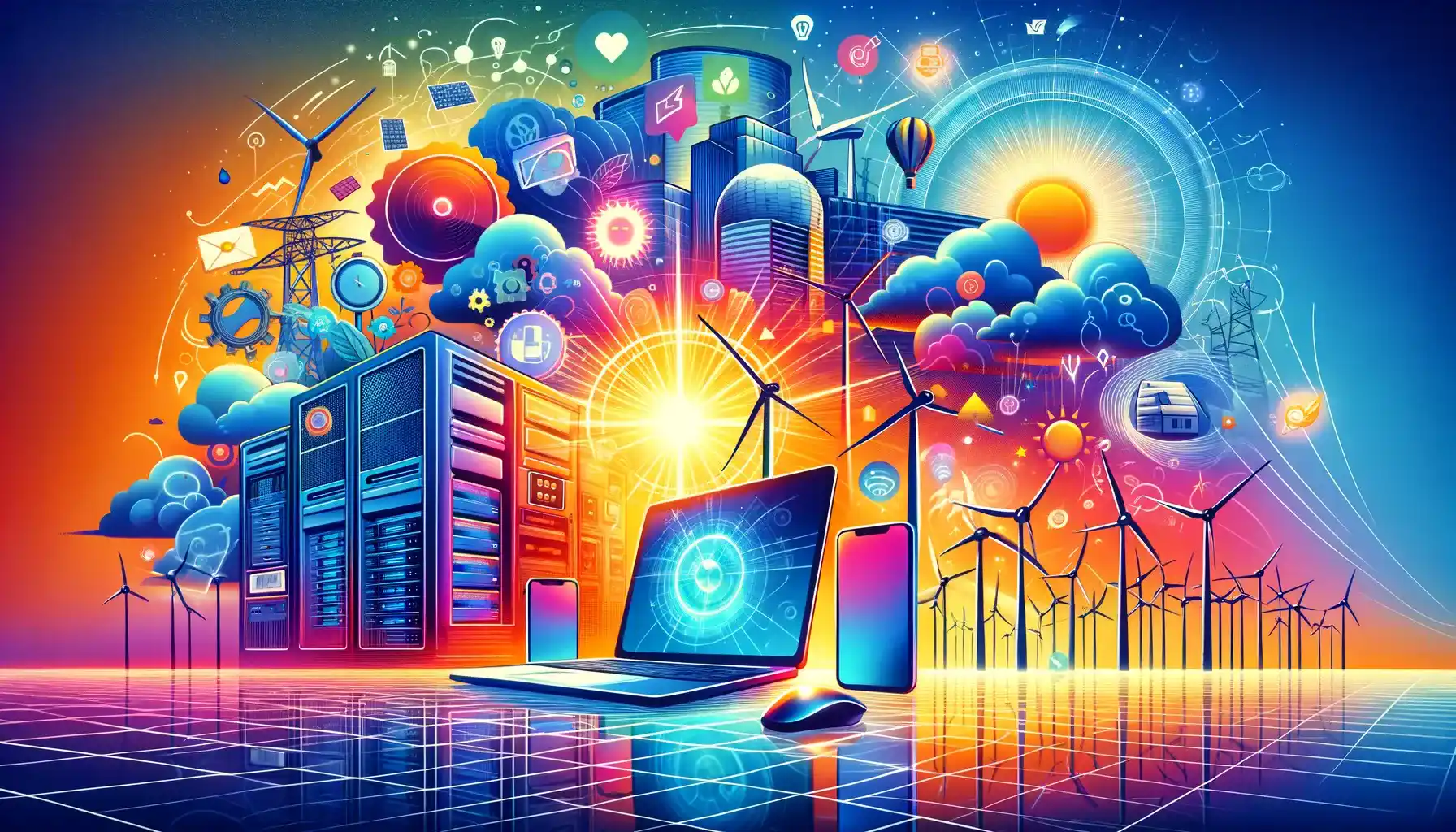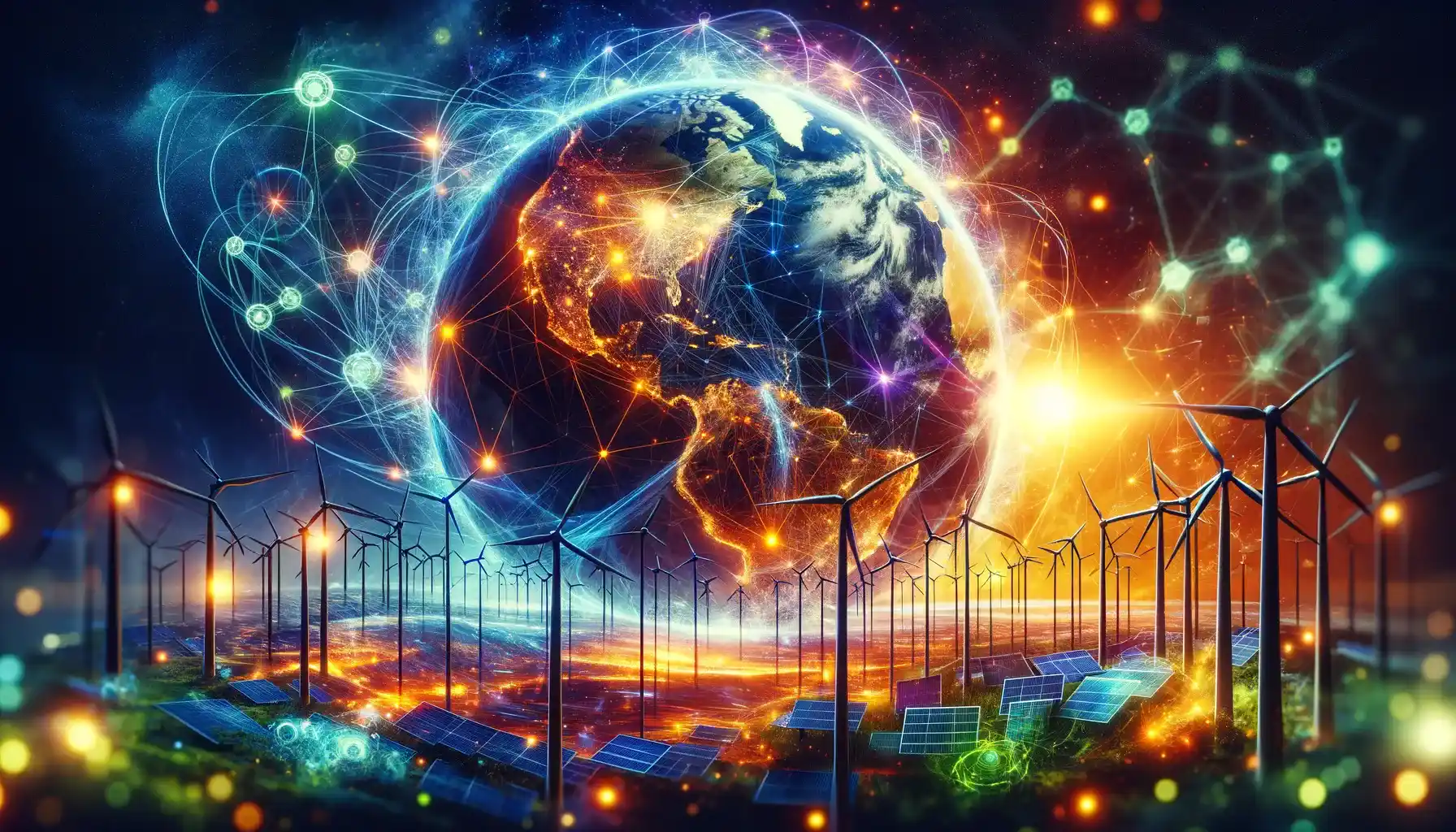Table of Contents
In today’s digital age, characterized by the omnipresence of digital technologies in virtually every aspect of modern life, the energy demand has skyrocketed. This surge in energy consumption presents profound challenges for sustainability and environmental preservation.
As our reliance on digital devices, data centers, and interconnected networks grows, so too does the strain on our energy resources and the impact on the environment. This article aims to delve into the intricate dynamics of energy consumption in the digital age, shedding light on its complexities and proposing ten innovative strategies to mitigate its adverse effects.
Energy Consumption in the Digital Age

The digital transformation sweeping across industries has revolutionized the way we live, work, and communicate. From smartphones and laptops to cloud computing and the Internet of Things (IoT), our dependence on digital technologies is unparalleled.
Understanding the intricacies of energy consumption in the digital age involves grappling with various challenges and complexities. These include the intermittent nature of renewable energy sources, the energy-intensive nature of data processing, and the growing energy demands of emerging technologies such as artificial intelligence and blockchain.
Tackling the issue of energy consumption in the digital age requires innovative solutions and collaborative efforts across multiple fronts. From technological advancements and policy interventions to consumer awareness and behavioral changes, a multifaceted approach is essential to effect meaningful change.
This article explains the complexities of energy consumption in the digital age and proposes ten innovative strategies to address this pressing issue.
1. Understanding the Digital Energy Landscape
- Understanding the digital energy landscape is essential for comprehending the significant challenges posed by escalating energy consumption in the digital age.
- With the rapid proliferation of digital technologies, such as smartphones, laptops, and IoT devices, there has been an exponential surge in energy demand.
- Consumer electronics also play a pivotal role in the digital energy landscape, with devices ranging from smartphones and tablets to smart home appliances consuming substantial amounts of energy during operation.
- The interconnectivity of digital systems amplifies energy consumption across various sectors, creating a complex energy landscape characterized by diverse sources and patterns of consumption.
2. The Hidden Costs of Digital Convenience
- The exponential growth of digital technologies in the modern age has brought unparalleled convenience to our lives. However, this convenience comes with hidden costs that extend beyond the screens of our devices.
- Data centers, which serve as the backbone of digital infrastructure, consume vast amounts of electricity to power and cool the servers hosting this data. The carbon footprint of these data centers is substantial, with estimates suggesting that they account for a significant portion of global energy consumption and greenhouse gas emissions.
- The hidden costs of digital convenience also manifest in various ways. The energy-intensive nature of digital infrastructure translates into higher operating costs for businesses and organizations running data centers.
3. Energy-Efficient Hardware and Infrastructure

- In today’s digital age, where energy consumption is a pressing concern, there’s a growing need for innovative hardware and infrastructure solutions that can mitigate this issue. Energy-efficient hardware and infrastructure play a crucial role in minimizing the environmental impact of digital technologies while ensuring optimal performance.
- One key aspect of energy-efficient hardware is the development of servers and other computing equipment designed to operate with minimal power consumption. Manufacturers are constantly innovating to create more energy-efficient processors, memory modules, and storage devices.
- By embracing energy-efficient hardware and infrastructure solutions, businesses can not only reduce their environmental footprint but also improve their bottom line through lower energy costs and enhanced sustainability credentials.
4. Software Optimization and Smart Technologies
- Software optimization and smart technologies play a crucial role in mitigating energy consumption in the digital age. These solutions offer innovative approaches to streamline processes and minimize unnecessary energy usage across various digital systems.
- Software optimization involves refining software algorithms and code to enhance efficiency and reduce resource requirements.
- Furthermore, the integration of Internet of Things (IoT) devices enhances energy management by providing real-time data on energy consumption and system performance. IoT sensors can monitor environmental conditions, equipment status, and user behavior, allowing for precise control and optimization of energy usage.
- For example, smart thermostats can adjust heating and cooling settings based on occupancy patterns, while smart lighting systems can dynamically adjust brightness levels to maximize energy efficiency. Similarly, gas metering enables precise monitoring and regulation of gas flow, ensuring optimal usage based on demand
5. Demand-Side Management Strategies
- Demand-side management strategies play a crucial role in optimizing energy consumption in the digital age, where the balance between energy supply and demand is often precarious. These strategies aim to regulate and influence consumer behavior to align with the availability of energy resources.
- Dynamic pricing is a key component of demand-side management, wherein electricity prices fluctuate based on supply and demand conditions in real-time. By adjusting prices to reflect the actual cost of electricity production, consumers are encouraged to reduce consumption during peak periods when energy is most expensive.
- By empowering consumers to actively participate in managing energy demand, demand response programs not only reduce strain on the grid but also promote a more flexible and resilient energy system.

6. Collaborative Efforts and Policy Interventions
- Collaborative efforts among industry stakeholders, governments, and environmental organizations are crucial for effectively addressing energy consumption in the digital age. This collaboration can take various forms, including partnerships, research initiatives, and advocacy campaigns.
- By funding research projects, providing grants for clean energy startups, and supporting technology incubators, governments can catalyze the development and adoption of innovative solutions to reduce energy consumption in the digital age.
- Collaborative efforts and policy interventions are essential for addressing the complex challenges of energy consumption in the digital age. By working together across sectors and implementing targeted policies, stakeholders can accelerate the transition to a more sustainable and energy-efficient future.
7. Software Optimization and Smart Technologies

- Software optimization and smart technologies play a pivotal role in mitigating energy consumption in the digital age. These innovations target the efficiency of digital systems, aiming to minimize energy wastage without compromising performance or functionality.
- Software optimization involves fine-tuning algorithms and code to streamline processes and reduce computational overhead. By optimizing software, developers can significantly lower energy demands without sacrificing the user experience.
- Software optimization and smart technologies offer promising avenues for reducing energy consumption in the digital age, empowering organizations and individuals to make informed decisions and adopt energy-efficient practices.
Conclusion
Addressing energy consumption in the digital age requires a multifaceted approach that integrates innovative strategies across hardware, software, infrastructure, and user behavior. The exponential growth of digital technologies has led to unprecedented energy demands, posing significant challenges for sustainability and environmental conservation.
Throughout this article, we’ve explored ten innovative strategies aimed at tackling energy consumption in the digital age. From optimizing hardware and infrastructure to leveraging smart technologies and renewable energy sources, these strategies offer practical solutions for mitigating the environmental impact of digital consumption.
As we navigate the complexities of the digital power grid, let us remain committed to innovation, sustainability, and responsible stewardship of our planet’s resources. By harnessing the transformative potential of technology while minimizing its energy footprint, we can create a more equitable, resilient, and environmentally conscious future for generations to come.